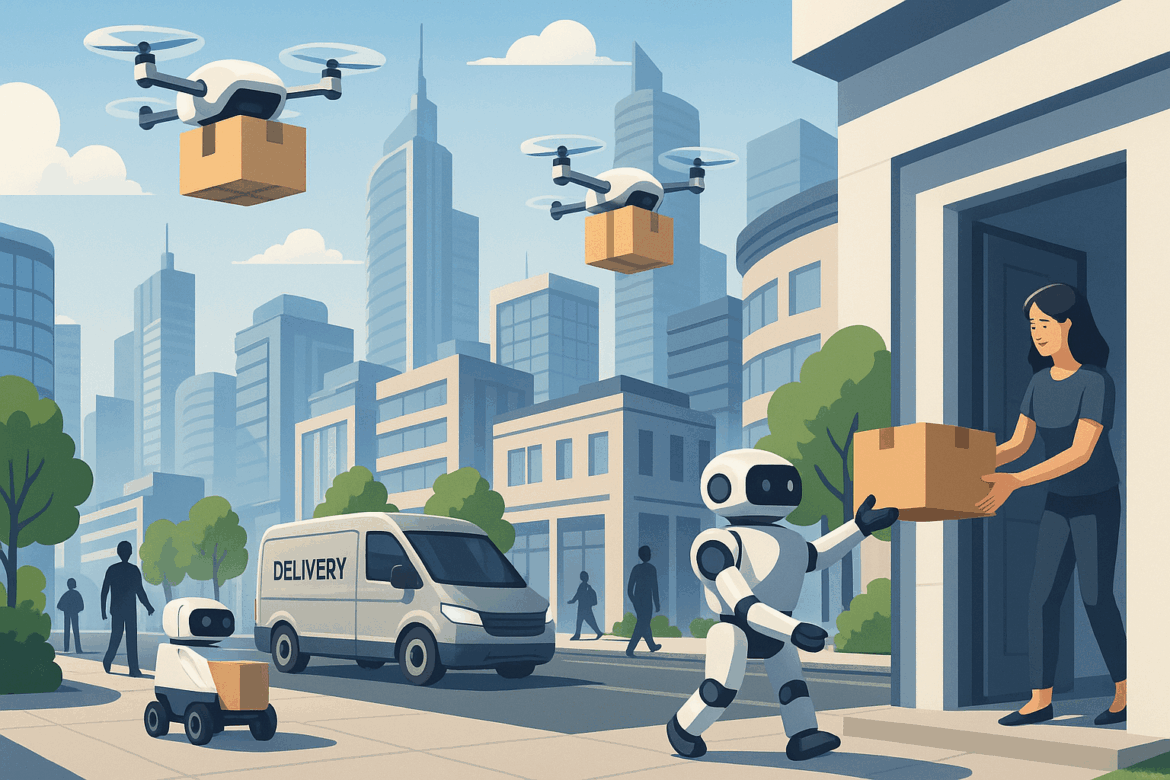Last-mile delivery is the final step in getting a product to you. It happens when your package travels from the nearest warehouse or delivery center to your doorstep. While it might seem simple, this stage often turns out to be the slowest, priciest, and most complex part of the delivery process—as online shopping demands keep growing.
Why Delivery Needs to Change?
As more people shop online than ever before, delivery systems face pressure to become faster, cheaper, and more productive. The usual methods—trucks and drivers—help but have their limits, like traffic jams high fuel prices, and set working hours. This is where tech like drones and robots can shake things up.
Drones: Delivering through the Air
Drones are compact flying devices that transport packages through the air straight to your doorstep. They excel at swift delivery of lightweight items—in regions with congested roads or challenging landscapes.
These machines rely on GPS and sensors to navigate and . Several businesses are now experimenting with drone deliveries for crucial items such as medications, food, and online purchases.
Key Benefits of Drones:
- Lightning-fast deliveries
- Bypasses road congestion
- Reaches distant or tricky locations
- Operates on electricity cutting down emissions
Ground Robots: Rolling on the Streets
Ground-based delivery robots are gaining popularity in urban settings. These small wheeled boxes travel on sidewalks to deliver packages to homes. They use cameras and sensors to navigate , avoid obstacles, and stop at crosswalks.
These robots excel at delivering food, parcels, or small items over short distances—in cities or on college campuses.
Key Benefits of Ground Robots:
- Cost-effective for local deliveries
- Operate 24/7
- No need for a driver
- Run on electric power so friendly
What’s Slowing Their Adoption?
While drone and robot delivery sounds awesome, we still need to fix some issues. Drones have to deal with rules about flying in cities, worries about safety, and problems when the weather’s bad. Ground robots need clear sidewalks good maps, and strong internet to do their job right.
Also, making and keeping these high-tech gadgets running can still cost some companies a lot of money.
A Greener and Smarter Future
The upside? These technologies aren’t just quicker—they’re kinder to the planet too. Drones and robots run on clean energy, cut down on delivery van traffic, and create less pollution. In the long run, they can also cut delivery costs and make shipping faster in crowded cities.
